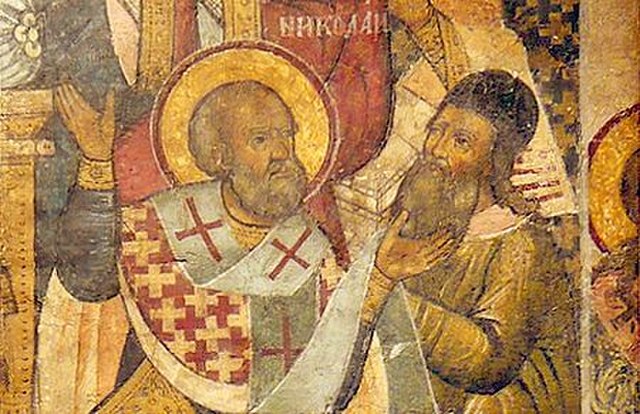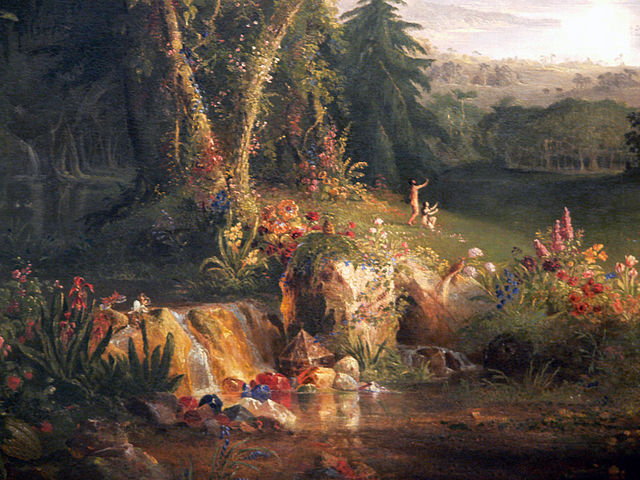Understanding Arianism
Arianism is a theological doctrine associated with the Alexandrian priest Arius (AD 250–336), who posited a hierarchical view of the Trinity. He asserted that the Father existed prior to the Son and therefore was superior. This assertion implies that the Son, Jesus Christ, was a created being and not co-eternal with the Father, challenging the traditional Christian understanding of Jesus’ divinity.
Why Arianism Was Declared a Heresy
The Church declared Arianism a heresy at the First Council of Nicaea in AD 325. The fundamental issue revolved around the nature and divinity of Jesus Christ. While Arius believed Jesus was a creation—albeit the highest of all creations—the Church upheld that Jesus was uncreated, co-eternal, and co-equal with the Father.
There are various Bible verses that were used to dispute Arianism. One such verse is John 1:1, “In the beginning was the Word, and the Word was with God, and the Word was God.” This verse asserts the divinity of Jesus, referring to Him as the “Word” that was present at the beginning and was, in fact, God.
In Colossians 1:16, it says, “For by him [Jesus] all things were created, in heaven and on earth, visible and invisible, whether thrones or dominions or rulers or authorities—all things were created through him and for him.” This verse further emphasizes the divine nature of Jesus, indicating His role in creation and therefore negating the Arian belief that Jesus was a creation Himself.
Arianism and the Fall of Rome
Arianism’s role in the fall of Rome is more nuanced and indirect, as the collapse of such an extensive empire was the result of numerous interconnected factors. However, the rise of Arianism did contribute to the religious and political fragmentation of the empire.
After the Council of Nicaea, Arianism continued to be a point of contention, gaining support among some segments of the Christian community. Many of the Germanic tribes that invaded the Western Roman Empire, including the Visigoths and Ostrogoths, adhered to Arian Christianity, which led to religious tensions and divisions within the empire.
Religious unity was an important part of Roman imperial control, providing a shared cultural and moral framework. As Arianism and other theological controversies caused divisions, the internal cohesion of the empire weakened. These tensions and conflicts further undermined the stability of the Roman Empire, contributing to its eventual fall in the 5th century.
The Death of Arius
The death of Arius, the founder of the Arian doctrine, has been the subject of many dramatic interpretations. According to ecclesiastical historian Socrates of Constantinople, Arius’s death was sudden and occurred under mysterious circumstances.
As narrated by Socrates Scholasticus in his “Ecclesiastical History,” Arius was about to be readmitted into communion by Alexander, the Bishop of Constantinople, upon the emperor’s insistence. Arius was seemingly triumphant, for it appeared that his teachings had weathered the storm of controversy.
However, on the eve of the scheduled ceremony, Arius suddenly fell ill while walking across the imperial forum. He was said to have rushed into a private area, from where he emerged dead. To many, the nature and timing of his death seemed providential, serving as divine judgment for his perceived heretical teachings. This account of Arius’s death was often used as a cautionary tale by those who opposed his teachings, illustrating how deeply the Arian controversy had permeated
The Death of Arius: A Graphic Account
The sudden and violent death of Arius was a shocking event that reverberated throughout the Christian community. According to Socrates of Constantinople, Arius was preparing to join in the Sunday worship at the great church of Hagia Sophia, where he was to be publicly received back into communion by the Bishop of Constantinople.
As Arius moved through the streets of Constantinople, he was struck by a sudden and severe pain in his abdomen. Desperate for privacy amidst the crowd, Arius dashed into a nearby alley and entered a private area, which happened to be a public restroom.
There, in a cruel twist of fate, the architect of a theological controversy that had shaken Christianity to its core met his end. Arius suffered a violent internal hemorrhage, a fact made evident by the gruesome scene discovered by those who ventured in after him. He died alone, humiliated, and in agony.
This shocking event was interpreted by many as a divine judgment upon Arius for his heretical teachings. The graphic nature of his death was seen as a symbol of the spiritual and moral decay that his teachings represented.
It’s important to remember that while these historical accounts provide vivid and dramatic narratives, they were often influenced by the personal beliefs and biases of their authors. Nonetheless, the account of Arius’s death is a telling testament to the intensity and passion that surrounded the theological controversies of the time.
Aftermath and Legacy
The influence of Arianism didn’t end with the fall of the Western Roman Empire. It continued to be a major force among the Germanic tribes that had conquered portions of the empire. Kingdoms such as the Ostrogothic Kingdom in Italy, the Visigothic Kingdom in Spain, and the Vandals in North Africa all adhered to Arian Christianity.
However, Arianism’s influence waned over the centuries. One by one, the Germanic kingdoms converted to Catholic Christianity, partly due to the efforts of missionaries and partly due to the political advantages of aligning with the Papacy and the broader Christian community. By the 7th century, Arianism had largely disappeared.
In retrospect, the Arian controversy played a significant role in shaping the Church’s theology and its understanding of the Trinity. The Nicene Creed, formulated in response to Arianism and other heresies, is a testament to this struggle and is recited by Christians around the world today as a profession of their faith.
Moreover, the challenges posed by Arianism led to a further refinement of Christological and Trinitarian doctrines in subsequent Church councils. The ecumenical councils, which include the First Council of Nicaea (325) and the Council of Constantinople (381), elaborated on these themes, culminating in the Chalcedonian Definition (451) that affirmed Christ as “the same perfect in Godhead and also perfect in manhood; truly God and truly man.”
Conclusion
Arianism, while declared a heresy, had significant historical and theological impacts. It brought into sharp focus the essential nature of Christ’s divinity and led to the Church solidifying its stance on the co-eternity and co-equality of the Father and the Son. This controversy also underlines the complexity of the relationship between theology and politics in the decline of the Roman Empire.
While Arianism was ultimately rejected by the Church, the theological debates it sparked served to deepen the understanding of the faith and played a significant role in shaping Christian orthodoxy. Its historical role provides a vital lens to appreciate the diverse factors—religious, political, and cultural—that contributed to the fall of the Roman Empire.
Discussion Questions:
- Why was the hierarchical view of the Trinity proposed by Arius so controversial, and how did it challenge the existing understanding of Jesus’ divinity within the early Church?
- How did Arianism contribute to the political and religious fragmentation of the Roman Empire? In what ways did the rise of Arianism impact the empire’s unity and stability?
- The death of Arius is often portrayed as a divine judgment. How does this interpretation reflect the religious tensions and the atmosphere of the time? What does this account reveal about how theological disputes were perceived and handled during this period?
Want to Know More?
- “Arius: Heresy and Tradition” by Rowan Williams: This book provides a comprehensive study of Arius and the theological controversy he sparked. It can offer an in-depth understanding of Arianism and its impact on the early Christian Church.
- “The Fall of Rome: And the End of Civilization” by Bryan Ward-Perkins: While this source doesn’t focus on Arianism directly, it offers a thorough analysis of the various factors that contributed to the fall of Rome. It can provide broader context to understand the indirect role of Arianism in the empire’s decline.
- “Ecclesiastical History” by Socrates Scholasticus: This primary source narrates the dramatic account of Arius’s death. It provides a firsthand perspective of the event and the related controversies of the time.




